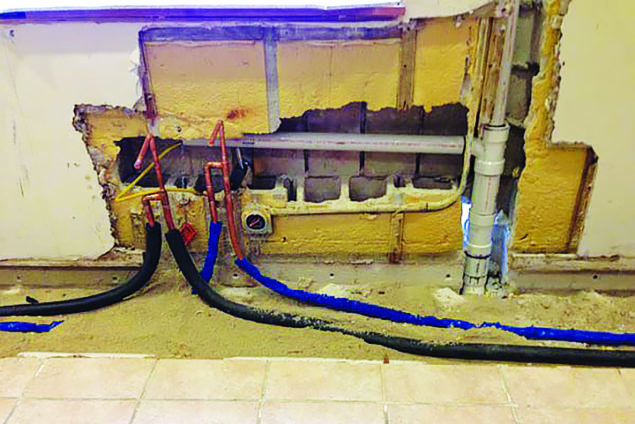|
Getting your Trinity Audio player ready...
|
It is commonplace for older (pre-1974) South Florida homes to experience a failure of their cast-iron wastewater pipes. These are the pipes that run to the septic tank (or sewer). Homeowners affected by this need to be smart and alert in order to get through this most unfortunate situation.
If you’ve ever heard gurgling after a load of laundry or long shower, you might be hearing the early warning signs. Also, if a toilet seems to be flushing slower than normal or needs multiple flushes, take note. An increase in roach sightings and random bad smells can also signal trouble. Water backups are a more severe sign and one you don’t want to just throw Draino at and forget. In my experience, it is better to get a professional out early and deal with this head on. Here’s why…
As more homes are found with this issue, insurance companies are doing what they do best; denying and delaying current policyholder claims and quickly re-writing policies to exclude coverage of this very problem. The longer you wait, the more likely you are not to get paid or get paid very little.
I won’t go into all the details about cast-iron deterioration other than to say: (a) the bottom of the pipe thins out first and develops pin holes, (b) interior scaling occurs, impeding smooth flow of solids, (c) water seeps out along the pipe path and starts to wash away the supporting soil below, which then can lead to (d) collapse of the pipe and even create potential for small sinkholes.
In most cases, after being diagnosed with deteriorated cast-iron pipes, the only proper solution is to replace them with PVC. This involves cutting through your home’s slab, removing the cast-iron and using the same path and pitch to lay new PVC pipe on top of properly re-compacted fill. You can expect lots of mess and time in this process.
Do not treat this issue as your typical run-of-the-mill home repair. Getting at the cast-iron pipes creates other repair jobs and can cascade into near complete interior remodeling. As such, understand you’ll be managing a project that involves your insurance carrier, a plumber who specializes in this type of work, the local government’s permit process and likely a contractor or two to restore your home’s damage after accessing the pipes.
While I am not an expert and every case and resolution is different, I have recent first-hand experience of this with a Palmetto Bay home. My advice is:
● Do NOT fight with your insurance carrier up-front. Use their adjuster and avoid the lawyer route. I believe my outcome was far better than if I had gone into the insurance claim looking for a fight and taking the first swing. You can always bring in an attorney and a public adjuster later.
● Choose a plumber who has lots of experience in replacing cast-iron. There are only a handful in South Florida. Also, when you select your plumber, choose not only by their plumbing skills, but ask about their ability to work with insurance companies regarding claims.
● Don’t believe your insurance company. Most will tell you plumbing is a wear and tear part not covered under your policy. That’s usually true, but they should cover accessing the plumbing for repair and restoring your home once the work is done.
● Use current building code and the permitting process to force the insurance company to pay for what they must pay for, called code compliance coverage. In my case, they had to redo my electric service because it ended up not being compliant to current building code.
● Take time every day to take lots of photos of the work being performed. You may also want to shoot some video. I ended up submitting around 100 photos to my insurance carrier in order to have them cover additional items.
Even if you don’t want to be a project manager, you’ll likely end up doing just that. I strongly believed in hiring different people for each phase of my project. This created a natural friction and gave me multiple opinions about each task. Yes, it made it more complicated, but it also yielded a better job than if I’d just let the plumber bring in a bunch of other trades to “do the whole thing.”
There are so many facets to this issue. As a Realtor, I see it all. Please feel free to contact me by email with questions at hal@miamihal.com. I’ll do my best to help.
Real Estate Update
As of September 18, the Pinecrest, Coral Gables, Palmetto Bay and Cutler Bay markets are all sellers’ markets. This is indicative of the effects of COVID-19 on the luxury home market. Historically low interest rates, coupled with low inventory, equals a good opportunity to sell! If you’re ready to move, I can assist you with local expertise, realistic expectations and truthful guidance. It’s easy to get started at miamihal.com/getstarted.
Hal Feldman (MiamiHal) is a Realtor with RE/MAX Advance Realty. You can contact him with your story ideas or real estate questions at www.MiamiHal.com, Hal@MiamiHal.com or www.facebook.com/MiamiHal









